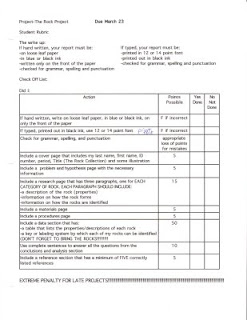Tuesday, 31 March, 2009
use information from videos from the internet, movies, and classroom discussions to:
-compare and contrast erosion and weathering.
-describe how weathering affects erosion.
-compare and contrast physical and mechanical weathering.
Students described the beach (physical) as their do now.
Students then took notes from the BrainPop movies weathering and erosion. If you need to see the movies, email me for the user name and password.
Students then watched the Bill Nye video on erosion.
There was no home learning.
***Note: On Monday, there was a substitute. Students did in-class reading on weathering and erosion. They submitted work for a grade. These pages ARE NOT available on line. As a make-up assignment, visit the following sites and go through the information to learn about weathering and erosion.
http://www.scribd.com/doc/529475/Weathering-and-Erosion
http://www.geography4kids.com/files/land_erosion.html
http://www.teachertube.com/view_video.php?viewkey=addc30e89d25b3bfe6d6&page=1&viewtype=&category=
























